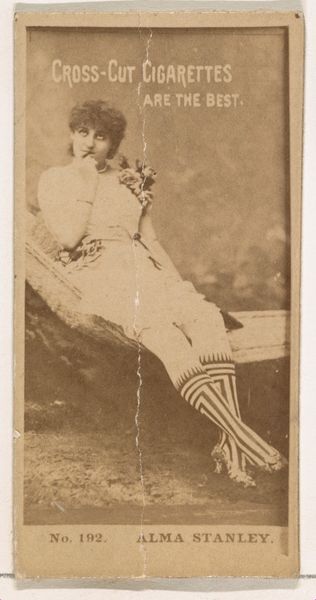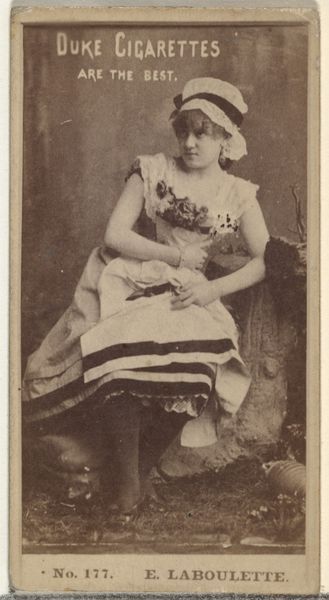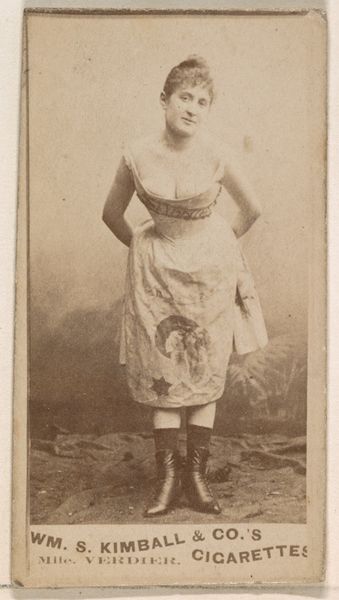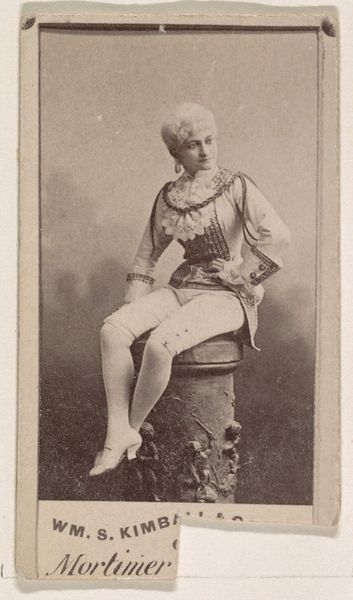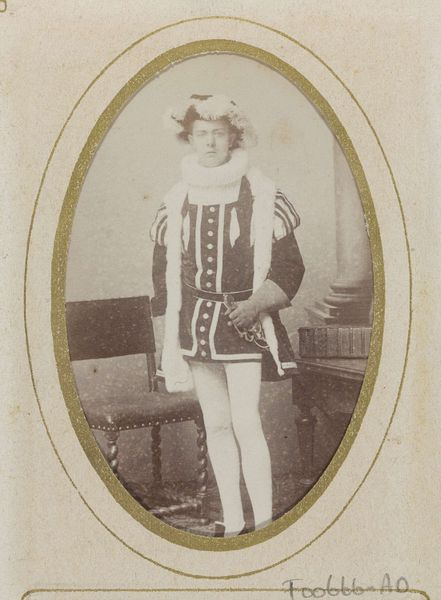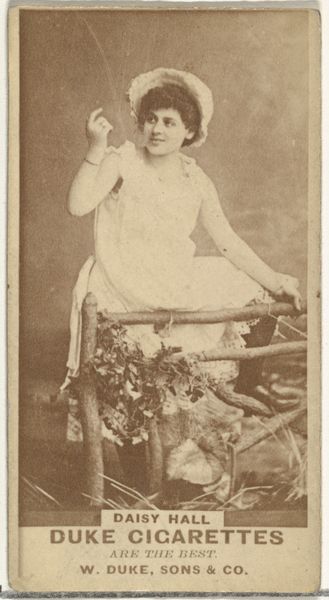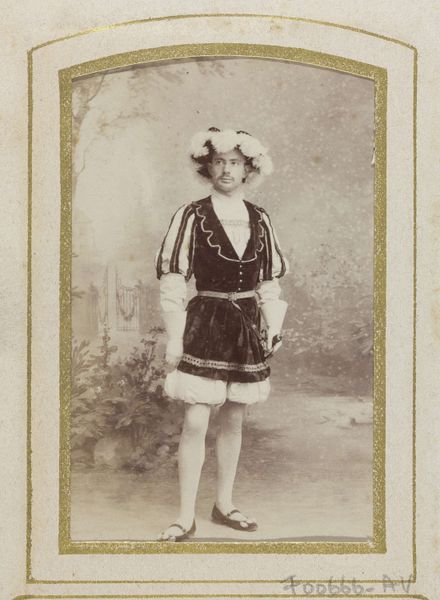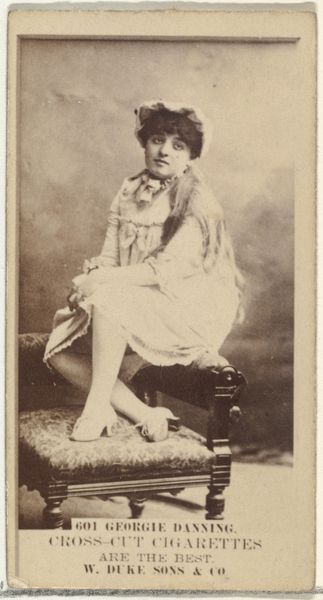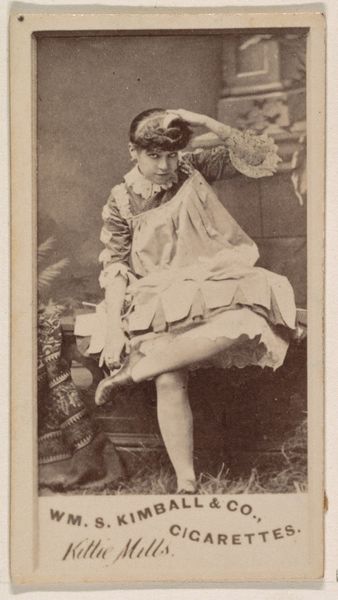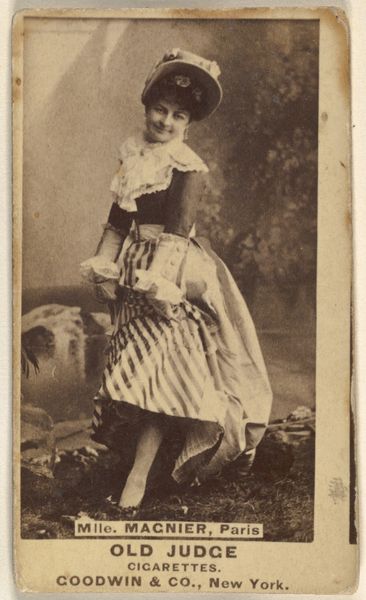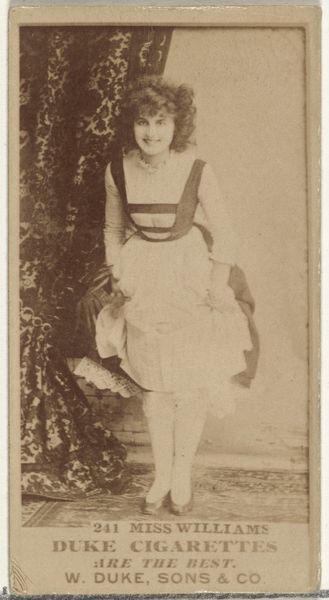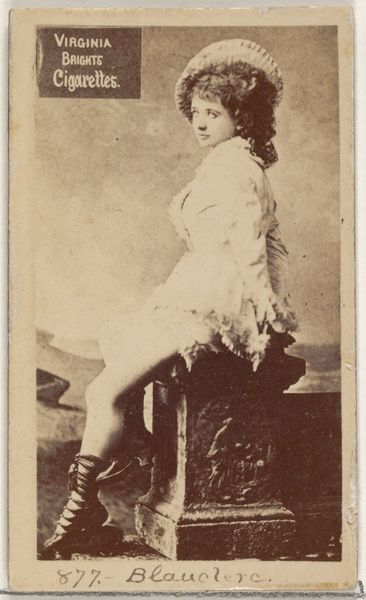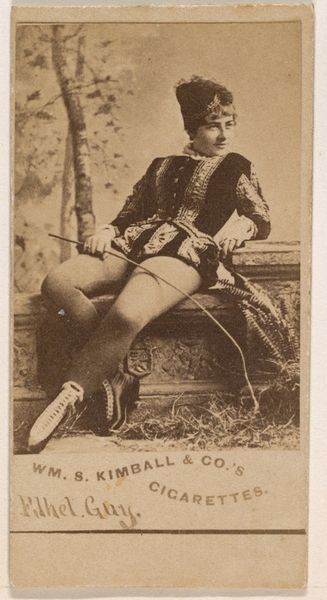
Mlle. Cuyon, from the Actresses series (N203) issued by Wm. S. Kimball & Co. 1889
0:00
0:00
drawing, print, photography
#
portrait
#
drawing
#
pictorialism
# print
#
photography
#
19th century
#
erotic-art
Dimensions: Sheet: 2 5/8 × 1 3/8 in. (6.6 × 3.5 cm)
Copyright: Public Domain
Curator: This cabinet card, dating back to 1889, is titled "Mlle. Cuyon, from the Actresses series," issued by Wm. S. Kimball & Co. It’s quite petite, a photograph printed onto cardstock, meant to be collected and traded. Editor: The sepia tone gives it a dreamlike, nostalgic feel, doesn't it? There’s something unsettling in the softness, almost blurring, of the image—especially the sharp angles of her peculiar hat. Curator: These cards were originally included in cigarette packs. Series like “Actresses” reveal a lot about the commodification of the female image, aligning performers with consumer products. The photograph’s diffusion tells us so much about standards of beauty as linked to visibility. Editor: Absolutely. Kimball used mass production to disseminate this image; this was about creating a collectible object tied directly to the act of consumption. How many cigarettes did someone need to buy to acquire the whole set, and what kind of tobacco went into their blend? Curator: The image of Mlle. Cuyon becomes intrinsically linked to tobacco culture, feeding into patriarchal constructs around women. But we can also think about it more broadly as about the performer's profession and that woman's choice. Editor: Indeed. It’s also about the performance of gender. The actress poses confidently. Yet the image itself is constrained by the economic apparatus surrounding its production. It really comes across in the slightly frayed and inexpensive stock card the print is affixed to. Curator: I see your point. The materials are clearly meant for quick, mass consumption rather than posterity, even if this item has survived. That tension reveals so much. It invites reflection about her class and social identity as the artist or subject of an image. Editor: For me, it also opens up an analysis of value, how consumer capitalism gives value through repetitive exposure of certain faces or certain commodities but devalues individual lives. I think her slightly sardonic half smile reveals something of the artifice behind this. Curator: And by bringing her image into countless homes, the photograph might have empowered her, helping to elevate her position and allowing women from all classes to consider their place in the public sphere, but then we need to ask who the picture serves at the end of the day? Editor: A fascinating insight, that! To summarize, looking at how an image is produced and consumed exposes the many facets of societal attitudes and conditions of the time period in question. Curator: I agree. By dissecting these visual fragments, we confront historical legacies, the economics of labour, identity and representation in nuanced, critical ways.
Comments
No comments
Be the first to comment and join the conversation on the ultimate creative platform.
